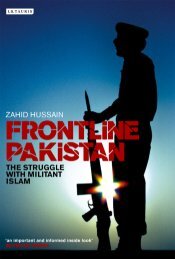US-Pakistan Relations: The Way Forward - Arz-e-Pak
US-Pakistan Relations: The Way Forward - Arz-e-Pak
US-Pakistan Relations: The Way Forward - Arz-e-Pak
You also want an ePaper? Increase the reach of your titles
YUMPU automatically turns print PDFs into web optimized ePapers that Google loves.
cation in legal studies in London. As a barrister, he soon became the leadinglawyer of Bombay, India. As a politician, he was known for his commitment tothe western style of democracy. Jinnah initially joined the Indian NationalCongress and launched the struggle to free India from the British, joininghands with the prominent Hindu leaders, especially, Gandhi. He eventuallyfound himself at odds with the Hindu majority as he was convinced that thecaste-centric Hindus did not intend to recognize the Muslims as equal citizensin India. 1 He then led the struggle for creation of an independent Muslim statelocated within the Muslim majority areas of India. Jinnah died on 11 September1948, just one year following India’s independence from Great Britain.Newly independent states at the outset of the Cold War, India and <strong><strong>Pak</strong>istan</strong>were soon faced with the dilemma of aligning either with the United States orthe Union of Soviet Socialist Republics (<strong>US</strong>SR). Although India promptlyentered into favorable relations with the <strong>US</strong>SR, <strong><strong>Pak</strong>istan</strong>i leaders, mostlygroomed in Western institutions, opted for aligning with the West. Correspondingly,Liaqat Ali Khan, the first prime minister of <strong><strong>Pak</strong>istan</strong>, turneddown Stalin’s invitation to visit Moscow and instead visited Washington in1950. 2 President Harry S. Truman generally remained indifferent toward <strong><strong>Pak</strong>istan</strong>from 1947 to 1952. When the Eisenhower administration took office in1953, the <strong>US</strong> government became increasingly anxious about the spread ofcommunism to Asia and started to take an interest in <strong><strong>Pak</strong>istan</strong>. This recognitionculminated in the 1954 Mutual Defense Agreement. 3<strong>The</strong> <strong>US</strong>-<strong><strong>Pak</strong>istan</strong> relationship continued to improve as <strong><strong>Pak</strong>istan</strong> joinedthe South East Asia Treaty Organization (SEATO) in 1955 and the CentralTreaty Organization (CENTO) in 1956. A main pillar of the relationship wasthe military cooperation between the two countries, which blossomed throughan active training exchange program and the fielding of <strong>US</strong> weapons andequipment within the <strong><strong>Pak</strong>istan</strong> military. Additionally, <strong><strong>Pak</strong>istan</strong> gave the UnitedStates access to the Bataber Air Force Base near the Afghan border for U-2reconnaissance flights over the <strong>US</strong>SR—at substantial risk to its own security. 4Meanwhile, in 1965 <strong><strong>Pak</strong>istan</strong> fought a major war with India over the state ofBrigadier General Gilani is a field artillery officer currently commanding a brigadein the <strong><strong>Pak</strong>istan</strong>i Army. His assignments have included duties as a brigade operations officerand served as an instructor at the School of Artillery and the <strong><strong>Pak</strong>istan</strong> Military Academy.He is a graduate of the <strong><strong>Pak</strong>istan</strong> Military Academy; the Army Command and StaffCollege in Camberley, U.K.; and the <strong><strong>Pak</strong>istan</strong> Armed Forces War Course. He holds aMaster of War Studies degree from Quaid Azam University in Islamabad, and is a 2006graduate of the <strong>US</strong> Army War College.Winter 2006-07 85













